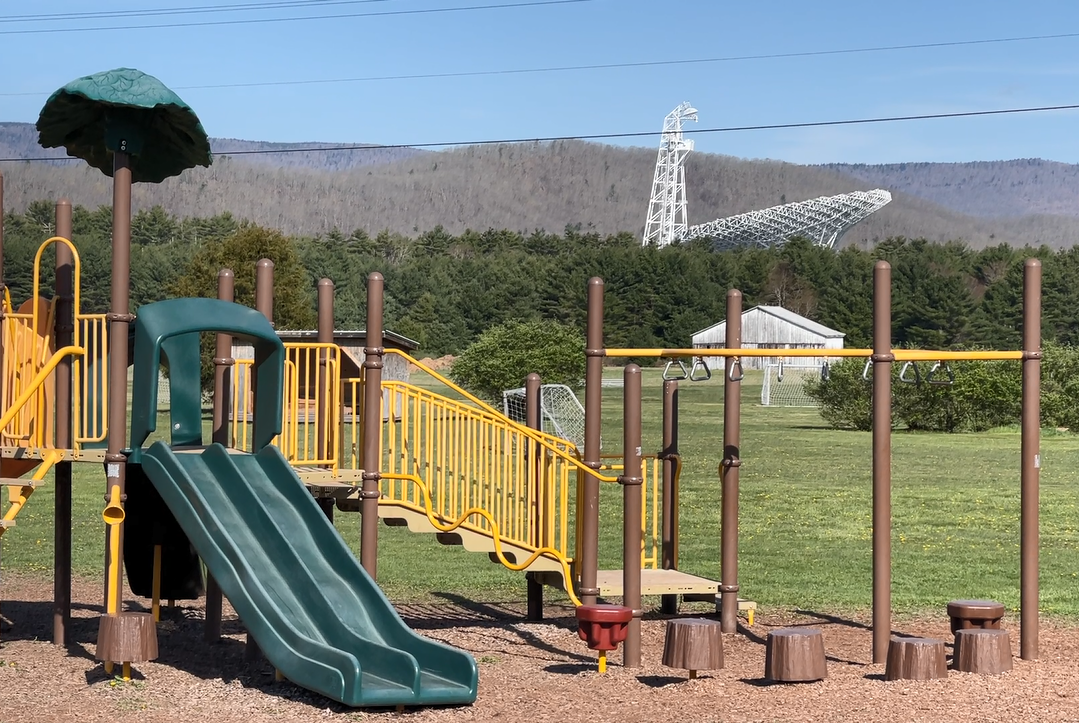The U.S. National Science Foundation National Radio Astronomy Observatory (NSF NRAO), in partnership with several leading Mexican universities and research institutes, has announced a series of landmark agreements and meetings aimed at advancing Mexico’s role in the Next Generation Very Large Array (ngVLA) project.
Recent News
Astronomers Discover a Superheated Star Factory in the Early Universe
Astronomers have uncovered a previously unknown, extreme kind of star factory by taking the temperature of a distant galaxy using the ALMA telescope. The galaxy is glowing intensely in superheated cosmic dust while forming stars 180 times faster than our own Milky Way.
Astronomers Share Largest Molecular Survey To-date: GOTHAM Legacy Data Goes Public
Astronomers in the “GBT Observations of TMC-1: Hunting Aromatic Molecules” research survey, known as GOTHAM, have released a spectral line survey with largest amount of telescope time ever conducted, charting more than 100 molecular species only found in deep space.
West Virginia Students Contact International Space Station LIVE

How would you feel if you could talk to an astronaut, orbiting over 200-miles above you in space?
Friday, May 7th at 8:00 AM EDT, students in rural West Virginia will experience this once in a lifetime opportunity. Green Bank Elementary-Middle School (GBEMS) will be contacting astronaut Mark Vande Hei on the International Space Station (ISS).
This contact is made possible by Amateur Radio on the International Space Station (ARISS), an international program that inspires students to pursue careers in science, technology, engineering and math. This experience is a limited opportunity available to only a handful of schools – around the world – who must go through an extensive application process, working closely with staff and volunteers to assemble the resources required.
GBEMS is located in secluded and mountainous Pocahontas County, West Virginia, one of the largest counties with one of the smallest populations east of the Mississippi River. The school happens to be next door to the Green Bank Observatory, home of the largest fully steerable radio telescope in the world, an unusual and impressive playground backdrop. Several staff from the Observatory volunteered to support this project, helping students to select and install the technology for this radio contact. The students only have a few precious minutes to establish a connection as the space station orbits above them on Earth.
School principal Julie Shiflet and science teacher Anne Smith put in many hours with students, staff, and volunteers to make this project possible. Following COVID-19 safety guidelines, a small group of students and staff will be using special radio equipment set up in the school gym for this contact. This event will be livestreamed from the Observatory Facebook page for the public to share in the excitement.

Students, staff, and volunteers rehearsing for the contact. A variety of connections must be tested, and the program timed, to ensure contact with the International Space Station as it passes overhead. Photo credit NSF/GBO/Jill Malusky.
The generosity of several groups made this project possible, including the Snowshoe Foundation, The Durbin Lions Club, the Eight Rivers Amateur Radio Club, and the Green Bank Observatory, with special thanks to GBEMS Principal Julie Shiflet and Science Teacher Anne Smith.
To learn more about Green Bank Observatory Observatory science and to see research opportunities visit their website. The Green Bank Observatory is a facility of the National Science Foundation and is operated by Associated Universities, Inc.
###
This news article was originally published on the GBO website on April 28, 2021.
Recent News
NSF National Radio Astronomy Observatory and Mexican Institutions Sign Historic Agreements to Advance ngVLA Collaboration
The U.S. National Science Foundation National Radio Astronomy Observatory (NSF NRAO), in partnership with several leading Mexican universities and research institutes, has announced a series of landmark agreements and meetings aimed at advancing Mexico’s role in the Next Generation Very Large Array (ngVLA) project.
Astronomers Discover a Superheated Star Factory in the Early Universe
Astronomers have uncovered a previously unknown, extreme kind of star factory by taking the temperature of a distant galaxy using the ALMA telescope. The galaxy is glowing intensely in superheated cosmic dust while forming stars 180 times faster than our own Milky Way.
Astronomers Share Largest Molecular Survey To-date: GOTHAM Legacy Data Goes Public
Astronomers in the “GBT Observations of TMC-1: Hunting Aromatic Molecules” research survey, known as GOTHAM, have released a spectral line survey with largest amount of telescope time ever conducted, charting more than 100 molecular species only found in deep space.
